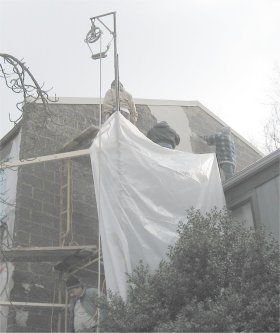 |
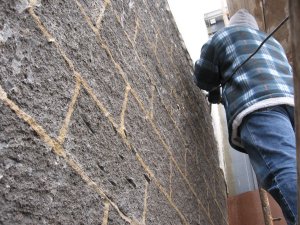 |
| Loose areas and sloppy patches prompted
replacement of this
whole wall.
This house is across the street from this
house.
The original backwards flashing had been replaced, but the
new
flashing
didn't overlap the stucco. The result is
water was still channeled behind the wall leading to it's
failure. |
1972 portland cement stucco is super hard. Stucco is torn
off
blocks.
Note how rough the surface off the block is now, providing a
good bond
for the new stucco. |
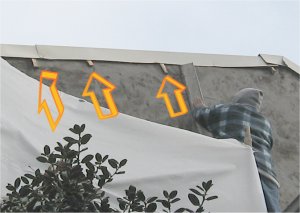 |
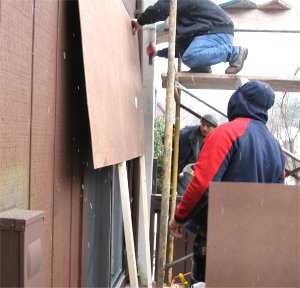 |
Coping (flashing on a parapet wall) is wedged to bring the
flashing
past the wall
surface. After the brown coat sets up the wedges are removed
and the
wall finished.
The original house had the flashing put on first and then
stuccoed.
When the coping was replaced, this problem wasn't corrected.
Now, the
flashing
extends past the wall, protecting the wall from water
infiltration. |
Windows and doors are protected from falling debris by
covering the
door with two by fours and masonite. |
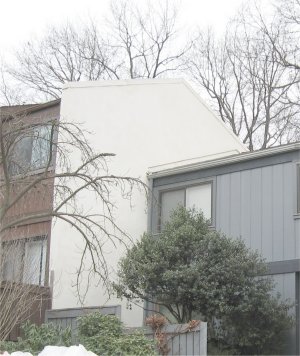 |
Finished wall- White portland cement and white sand.
Hopefully our
new wall will last 4000+ years.
Real stucco should last centuries, as long
as water doesn't get behind the wall. |




